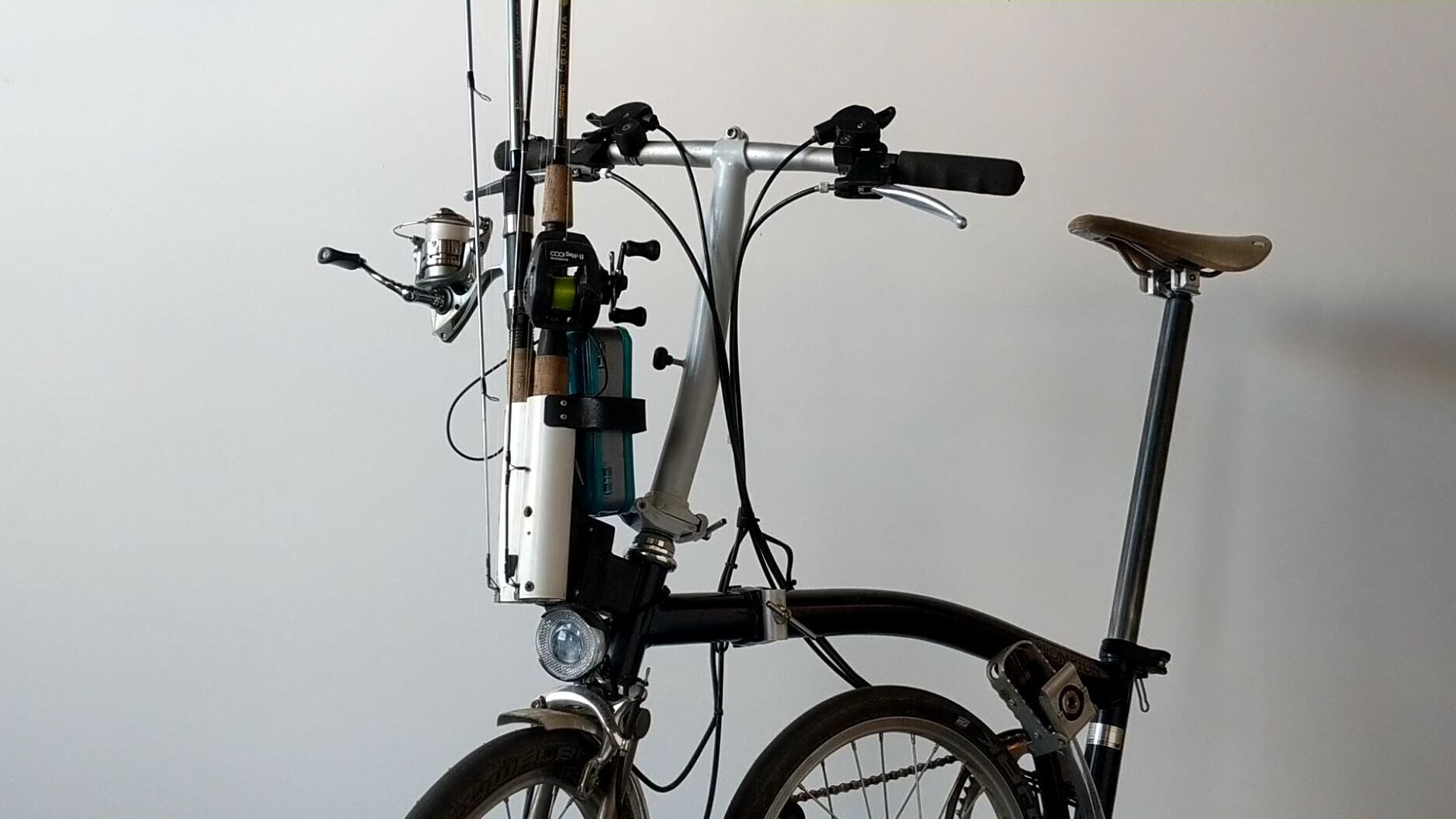One unexpected upside to the general havoc and tragedy caused by the COVID-19 Pandemic, was the much lighter traffic in the bay area. This has allowed me to take a faster route to and from work, one which happens to take me by Vasona Reservoir in Los Gatos.
After a few weeks of driving past the pleasant looking park I knew I had to get out to do some fishing, but since I would only be stopping by in the evenings on my way home I knew I wanted to maximize my efficiency. To me this meant bringing a bike along so I could cover a lot of ground within the park. Due to a previous commute I already owned a Brompton folding bike (a beautiful piece of engineering in its own right), which fits great into my car’s small trunk.


The only problem was figuring out how to cycle a few miles without having the fishing rods getting in the way. There are a few commercial products but they generally require tools to install/remove, luckily Brompton bikes have this awesome “carrier block” built in for holding a line of bags that they produce, which I could use as a mount for my contraption.
So now I have an idea and all the parts of the puzzle to start designing the solution, so I naturally pulled up Solidworks to whip out a couple 3d printed prototypes right? Not so fast, while this can be the case in some projects, it can be an important to take a step back and decide what’s your best path forward to achieve the goals of a proof of concept. In this case while there may be an injection molded part down the line (let us know if you’d be interested!) I was primarily focused in proving out not just the fit but also the functionality. There are also quite a few moving parts to a project like this; not only the physical fit to the bike, but how well does it hold the rods & tackle box, and how does it impact the bike functionality and folding.

Because of the number of features I was hoping to achieve I expected there to be quite a bit of iteration, but realized that some of the subcomponents could be modified independently of each other. To me this meant I should design my mockup to be modular for each component; bike mounting, rod holding, and tackle box holding, so that I could iterate parts independently. Making parts “assemblable” for a prototype takes time that doesn’t directly apply to end product. To minimize injection molding cost this would always end up being a 1 or 2 piece product so the time either model a single part and split it up, or model subcomponents would be wasted. This along with the fact that some of the more complex angles & dimensions for fitment could be more easily created “on the fly” while making parts led me to create the proof of concept entirely in the workshop with just a tape measure and set of calipers.
Using just a bandsaw and belt grinder most of the forms can be blocked out, with milling to scribed lines when fitment to existing parts was necessary. The outcome of about 2 hours in the shop was a functional rod holder that worked well the Brompton, however the first test ride pointed out an obvious flaw; the rods ended up right in the riders face when standing up to pedal. This was the perfect example of why physical prototyping can be better than virtual, this was immediately obvious and was easily remedied with removal of a few parts and a simple wedge to fix the angle. Had the prototype been printed, either a larger layout of the bike and rider would have been made to evaluate different ergonomics, or another day would have been lost waiting for a large 3d print to finish.
After some tweaking of rod retention mechanism and some Kydex thermo-forming for the tacklebox I had a functional piece that was ready to hit the lake. If we decide to productionize this concept I now have a functional foundation to use in a CAD layout. While there will still be measurements to make, the total time investment will be lower as the concept is already proved out.

